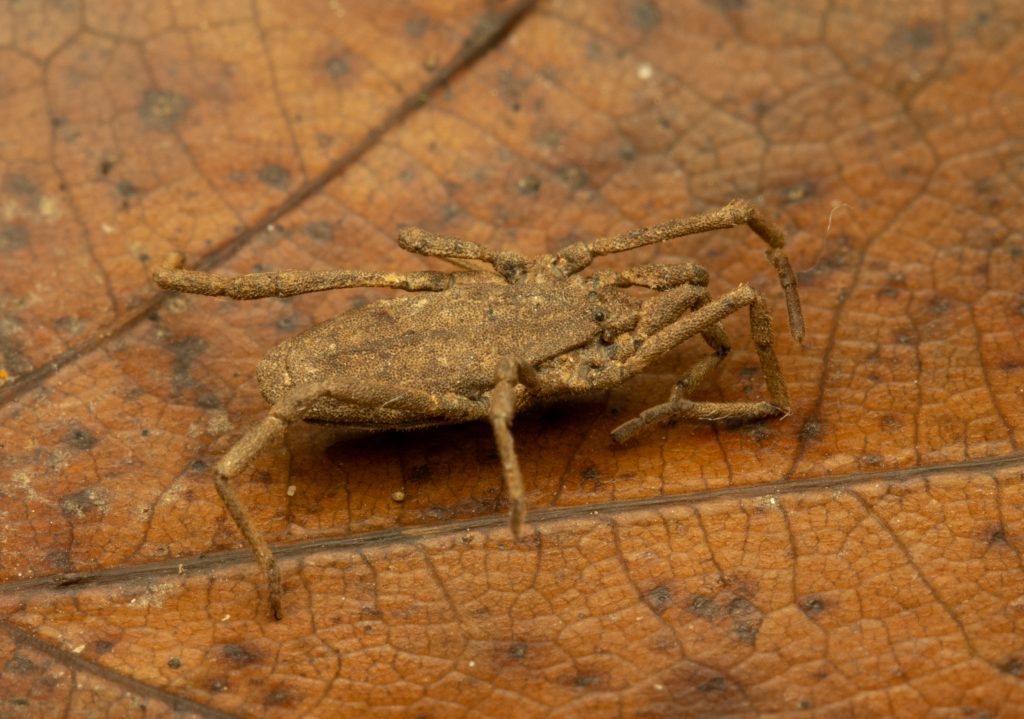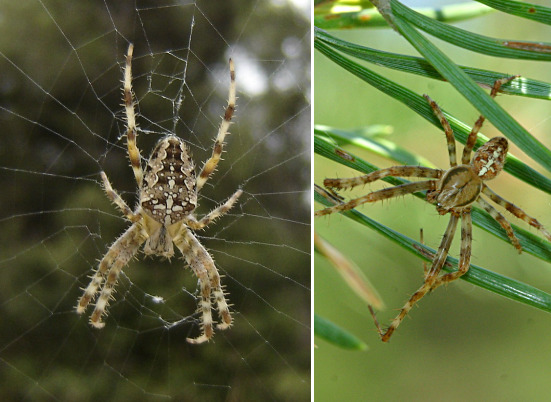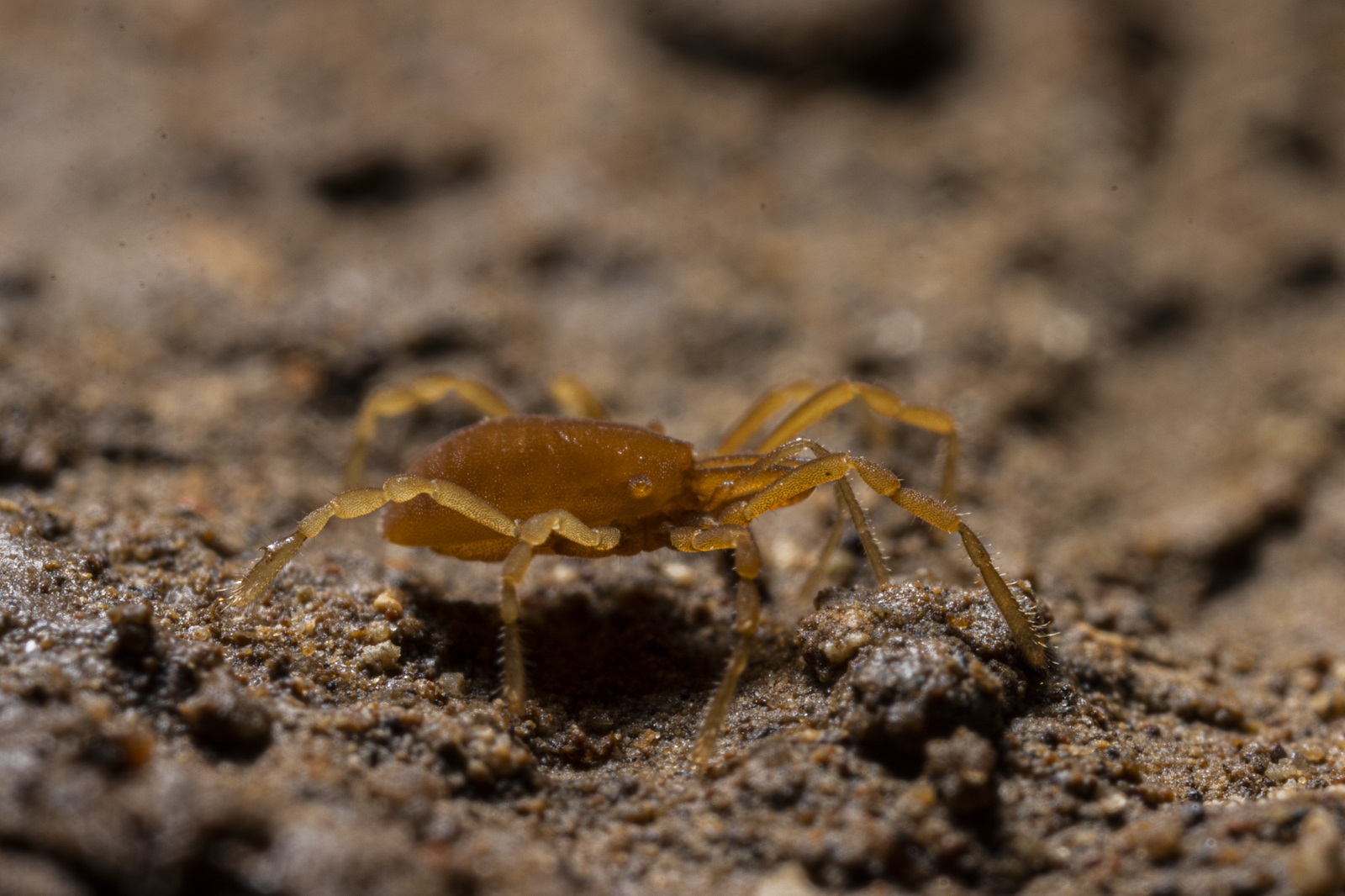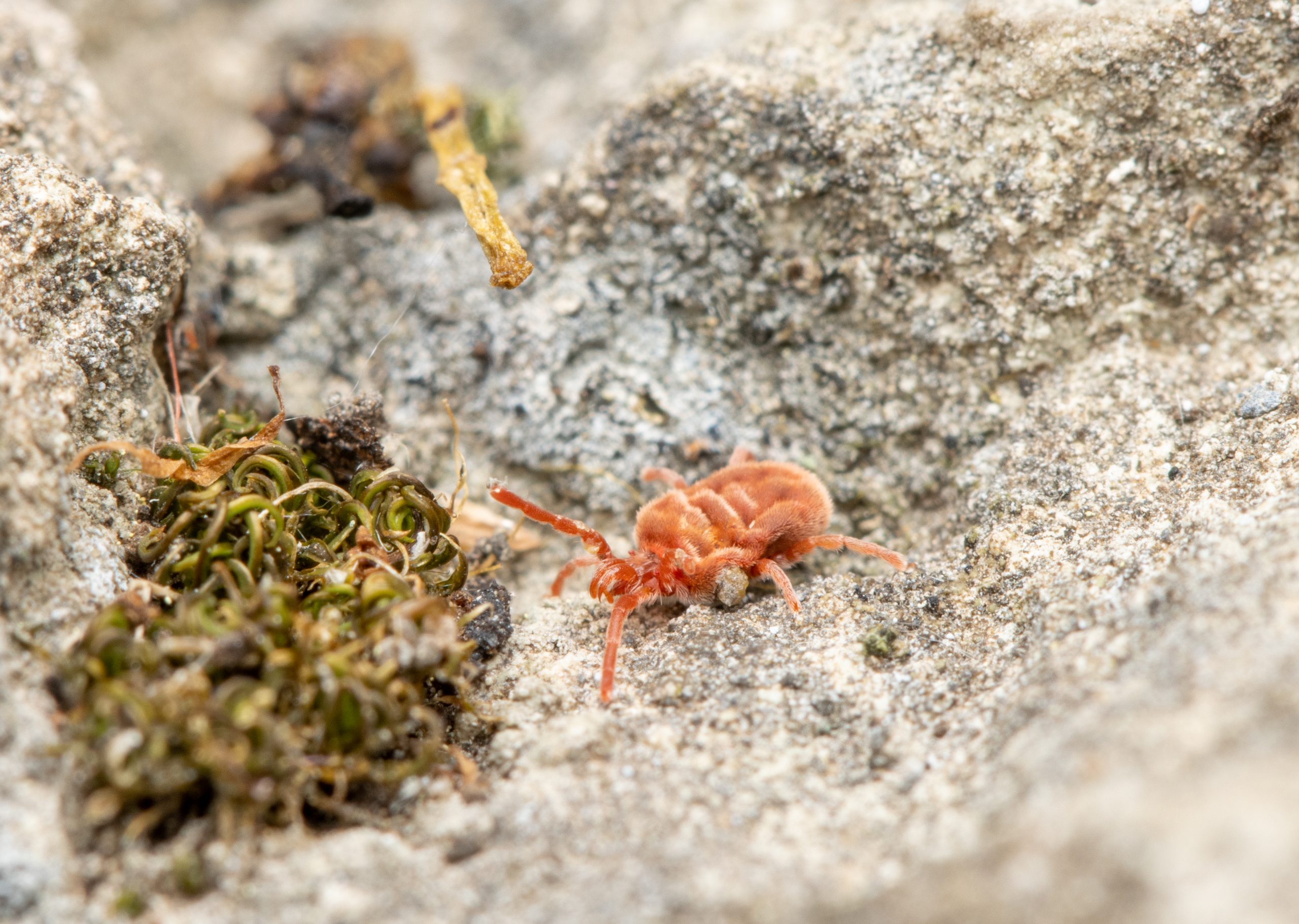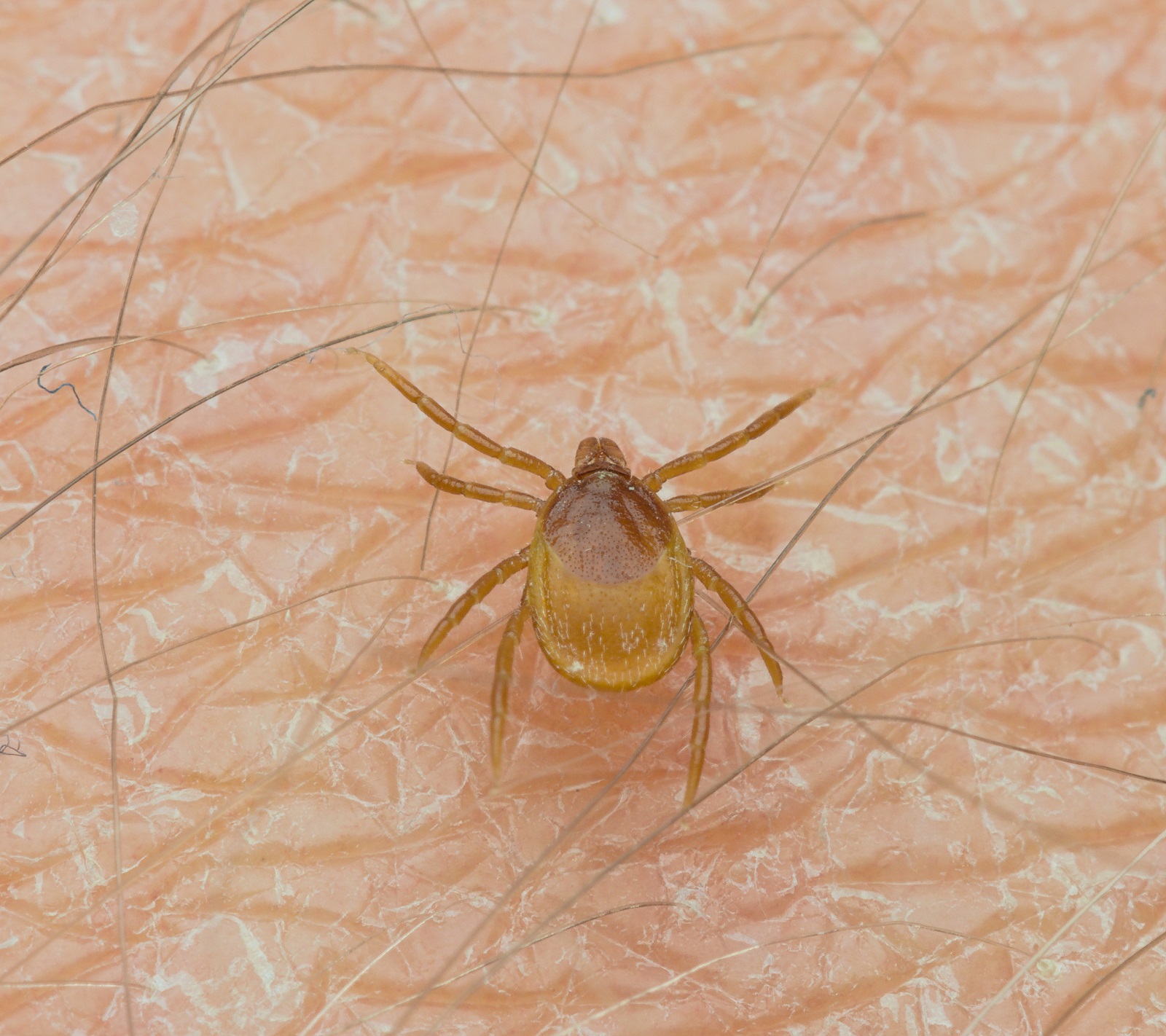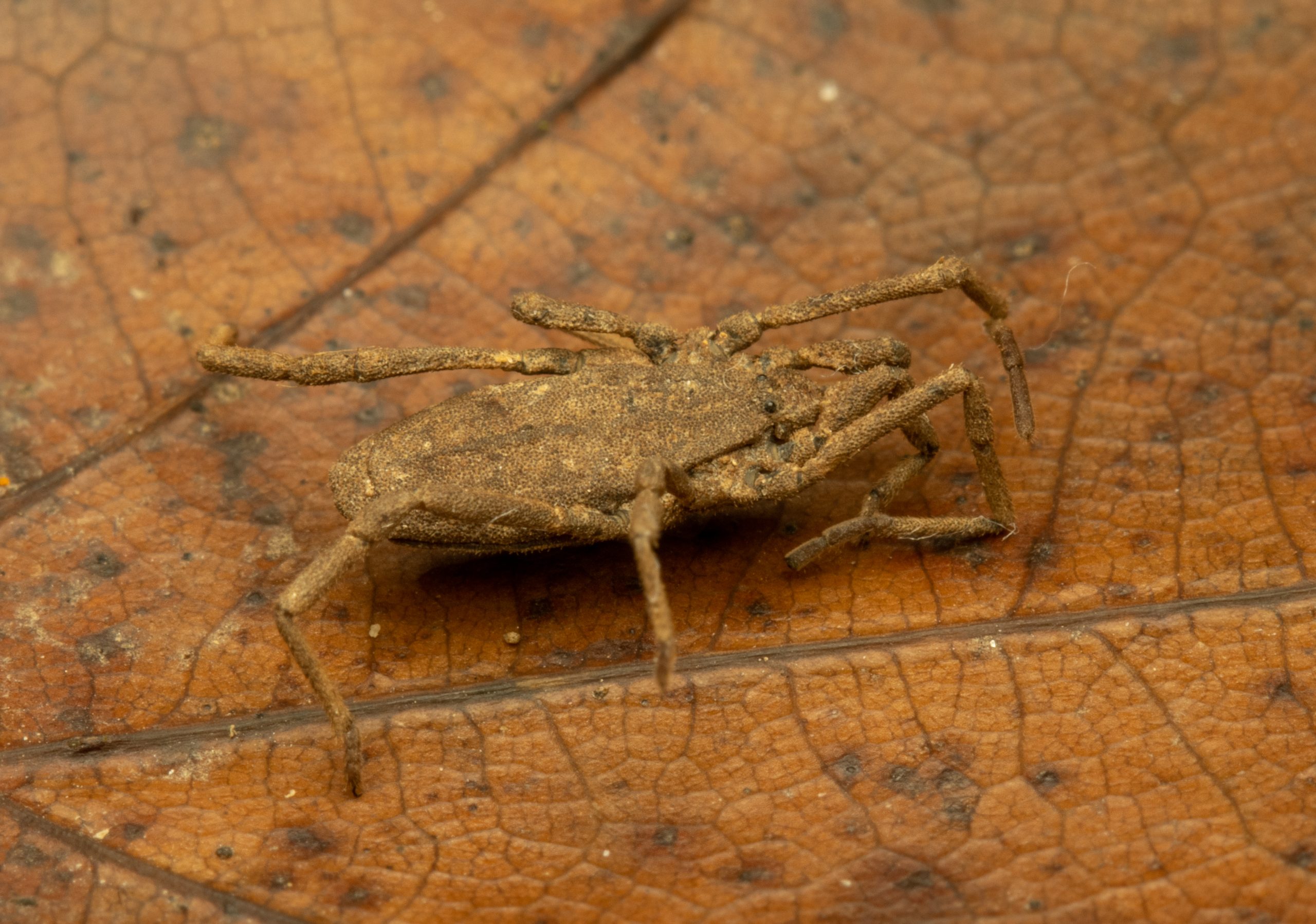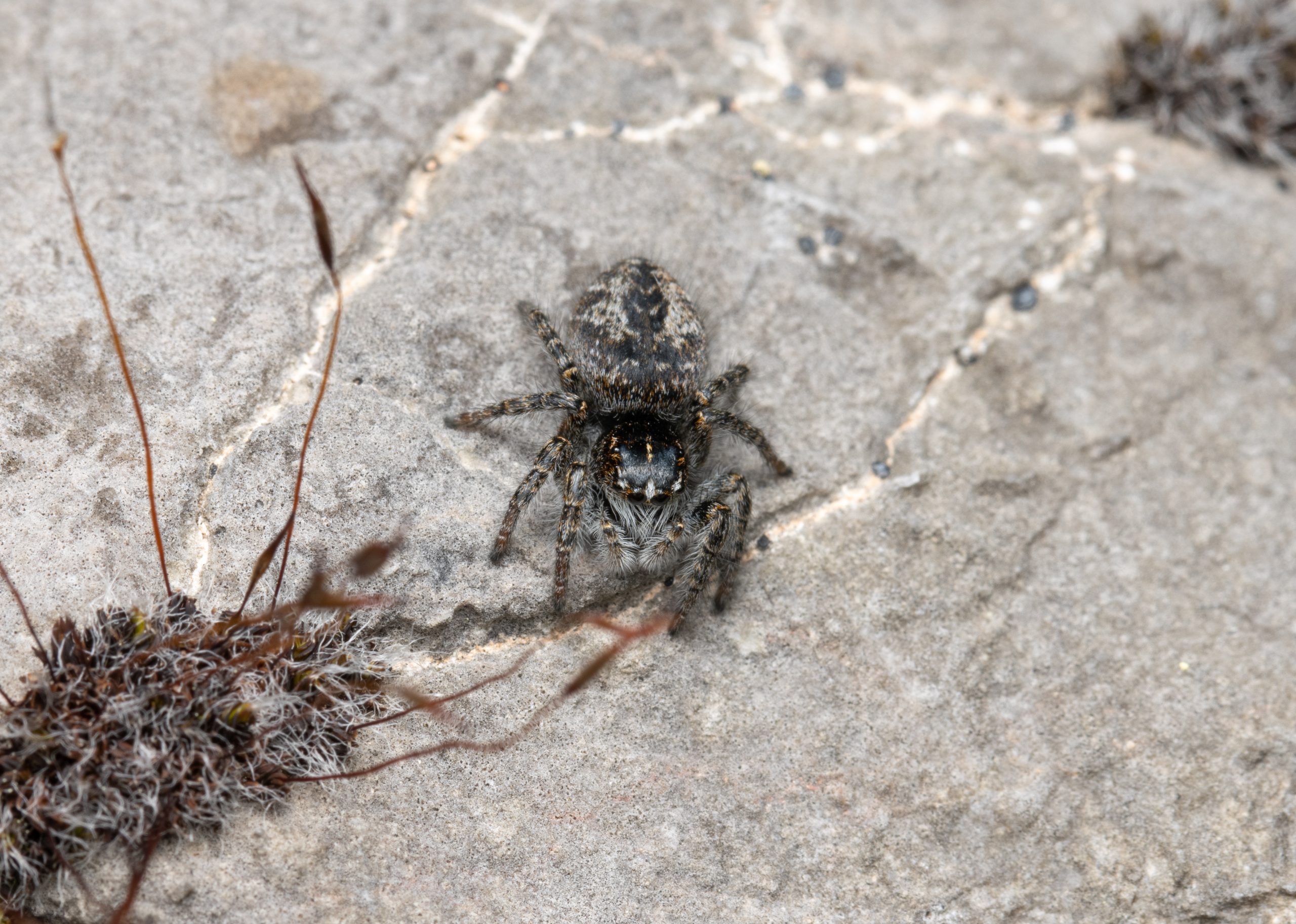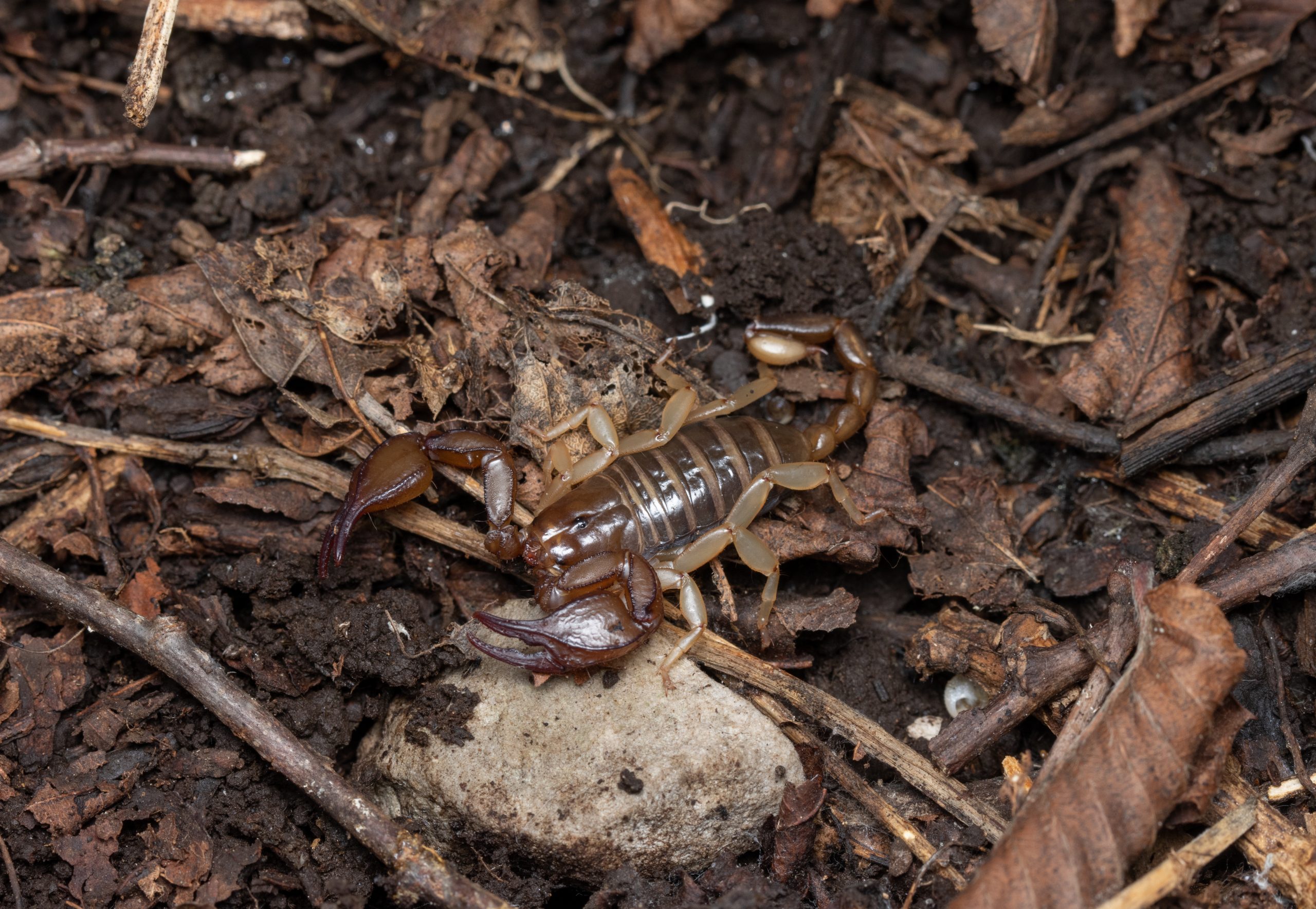- Chelicerata
Trogulidae
As other harvestmen members of the family Trogulidae also have a broad connection between the cephalothorax (prosoma) and abdomen (opisthosoma), which together form oval shaped body. Members of the family Trogulidae are mid-sized harvestmen with body length up to two centimeters. The body is distinctly flattened and leathery. Generally, the legs of harvestmen are exceptionally long and slender, however the family Trogulidae is one of the exceptions with relatively short legs.
The cephalothorax consists of six fused segments, which are dorsally covered by a uniform carapace. The cephalothorax bears six pairs of appendages. The first pair are chelate chelicerae, which are used to catch or gather food and pass it towards the mouth. At the base of the chelicerae, the food is masticated before it enters the mouth. The second pair of appendages are pedipalps which are modified as tactile organs. These are followed by four pairs of walking legs. The cephalothorax in members of Trogulidae is at the front elongated into a small hood which dorsally covers the short chelicerae and mouthparts.
The abdominal segments in Trogulidae are dorsally completely fused; the borders between the tergites are completely absent or very indistinct.
Members of Trogulidae primarily prey on snails. They are soil invertebrates thus their bodies are often covered with dirt particles attached to their exoskeleton. Generally, they are active at night and hide under rocks and in leaf litter during the day. Genus Trogulus is distributed in southern Europe, north Africa and Caucasus.
More photos
More info
Related arthropods

Authors
- Urban Bogataj,
- Gregor Bračko,
- Teo Delič,
- Cene Fišer,
- Žiga Fišer,
- Rok Kostanjšek,
- Rudi Verovnik,
- Miloš Vittori,
- Valerija Zakšek.
Students Vito Ham, Vesna Jurjevič, Gaj Kušar, and Adrijan Samuel Stell Pičman also participated in the project.
